Each place we go is a new adventure. As we move on, we reflect on what we did, what we learned and what we are able to take with us. Mexico was a great time for us . . . good location, good people, different things to do, something we really enjoyed.
The next adventure was dry camping on the BLM lands. "Boon docking" (dry camping) is another experience we have enjoyed. This is where we encountered our first RAIN in the DESERT . . . we never really considered it before . . . last year it sprinkled a couple of times the whole time we were down here but this was a real RAIN! It rained (quite heavy sometimes) for almost 3 days. We were parked beside a wide wash (like a dry creek bed) and watched it go from a dry creek bed to a fast moving stream back to a dry creek bed in a matter of a few minutes . . . we watched the buds come out and then the start of the flowers and the grass!! Everything just started to turn green.
It's interesting to compare the "life" in the RV parks/resorts with the dry camping. In the parks, there are rows and rows of RVs one after another, all kinds of organized activities, all kinds of rules and they tend to be quite cliquish. They generally have a lot of amenities like a club house, swimming pools, spas, golf and the like to attract the winter visitors and keep them comfortable. When you "boon dock", the RVs are scattered all over the place, going every which way, in groups or just sitting there all by themselves. You hear the generators because there is no electricity to plug into but usually by 10 pm everything is quiet. There is more movement because you need to go out to fill with water and empty your holding tanks. Evening campfires often dot the whole area with people sitting around talking in small and large groups and they will usually invite a stranger to join them. People seem more incline to talk to each other, to share information and visit right out there in the middle of nowhere. There is a different "spirit". This phase of our winter has been a real "people" time for us.
Yuma and Beyond
I don't particularly like the Yuma area. It could be because I "feel" like the locals resented the winter visitors . . . BUT . . . we did meet some great folks and that was special.
The desert around Yuma is barren with a scattering of creosote bushes and very few cacti. This is interspersed with lush cultivated fields of vegetables and alfalfa that are heavily irrigated. They seem to harvest one day and replant the next.
The City of Yuma is bustling this time of year with representation from all over the U.S., Canada and Mexico. I don't know how much the "visitors" get involved in the community, itself, and tend to stick to their own RV resorts/parks (and that could contribute to the resentment as well) but they definitely do spend a lot of money around there. Walmart has discovered this and they have set up their "Super Centers" accordingly.
Algondones, Mexico was all of 5 miles away. We went down a number of times and I got my teeth cleaned, another pair of glasses and cigarettes for $13.49 a carton. This is where Americans go for dental, optical services, to buy their prescription medicines and some medical procedures like kelation therapy. There are about four square blocks of drugs stores, dentists, optical outlets, doctors scattered amongst the leather, clothes, T-shirts and other of the usual Mexican paraphernalia. The hawkers coax the passing touristo (Gringos) to "get your prescriptions filled, glasses, dental work here - guaranteed lowest prices". They compete to promote Viagra or any other medication you may be looking for. The various medicines and their prices are listed in the windows and they have doctors on hand to write out the prescriptions for you. The medications we saw were all brand names from the major pharmaceutical houses. With the amount Americans are charged for their medications and medical services, I don't wonder so many go down . . . BUT . . . there are even more who are so scared to leave the States, they won't take the chance to the five miles south to save up to 75% on what they pay for meds at home.
One of the neatest things we saw was a group of Mexican artists who did the most incredible work with spray paint (cans) and pieces of scrunched-up plastic and paper. They would spray and smudge and wipe and streak and create the most unbelievable scenes. In hind site, there were a number of interesting photo opportunities, but, I just wasn't into taking pictures so . . . maybe next year.
The land we stayed on was actually in California a few miles west of Yuma. It was not BLM land but owned by the Indians and they were fine with us staying there (us and about 150 other RVs). At this particular place (Sidewinder Road), we spent a lot of time with our nearest neighbours. The fellas' were heavily involved in ![Sidewinder Rd1[1] Sidewinder Rd1[1]](https://blogger.googleusercontent.com/img/b/R29vZ2xl/AVvXsEgJeuUnZHLpnQpXL0oL5SURrCXLh4AgiaIGsMIvTaIVugCPtpvt7BzGR0v4gdzM-KG9qpaHs5U20SA32DjDcBPHqM2fWUZanBAr8JEY2DncXPEnkvaPg4yWxcXFf8y_tGzLkYT34Zp2cCc/?imgmax=800) finding out about the power and battery systems. This particular couple has been on the road for about 5 years and were at the point that they needed to produce more power to accommodate their life-style. They have 3 solar panels and the motorhome generator but this still wasn't meeting their needs. The fellas spend hours searching and researching the best way to go to get that extra power. An outcome of this is that Fred managed to move and upgrade our batteries, hook the portable catalytic propane heater to the bigger propane bottle and now we can enjoy our amenities more when we dry camp. They taught us a few new card games and we spent most of our evenings playing cards with them and talking.
finding out about the power and battery systems. This particular couple has been on the road for about 5 years and were at the point that they needed to produce more power to accommodate their life-style. They have 3 solar panels and the motorhome generator but this still wasn't meeting their needs. The fellas spend hours searching and researching the best way to go to get that extra power. An outcome of this is that Fred managed to move and upgrade our batteries, hook the portable catalytic propane heater to the bigger propane bottle and now we can enjoy our amenities more when we dry camp. They taught us a few new card games and we spent most of our evenings playing cards with them and talking.
On a trip into Algondones, we met another interesting couple. He is a retired lawyer/ judge and she was an Executive (Management Development) with McDonald's. They both retired and spent 4 years "sailing" on a 40 ft boat. We went out to dinner with them and spent some time talking and sharing views. I even gave him a hand with his resume (I just don't get away from it) because he wanted to get involved in the University in North Carolina.
We spent over two weeks in Yuma before we started heading north again . . . next stop Quartzsite. Quartzsite is at the junction of Hwys 10 & 95 and is where they have the HUGE swap meet (what we would call a flea market) in January and February every year. Fortunately, we missed it. They contend that there were about 100,000 RVs in and around the area for those two months. By the time we got there, it had pretty well thinned out. There were still a number of tent sites and vendors set up but the vast majority had moved on.
We did stay on a BLM campsite (Hi Jolly) there and were fortunate enough to choose the one that ![HiJolly5[1] HiJolly5[1]](http://lh3.ggpht.com/-1D_Dyia3Q6M/UpE9f9WmgaI/AAAAAAAAGLQ/Let0ETe1-UY/HiJolly5%25255B1%25255D%25255B2%25255D.jpg?imgmax=800) hosts a Blue Grass jam every year around the second week-end in March, after all the big Blue Grass festivals in the area are over. Well! . . . when we moved in there, there were a few scatterings of RVs - we went to town one day and WOW! . . . when we got back a few hours later . . . there was at least 250 RVs with a dozen or so jamming session going on all around the area. They stayed there for over a week and there was music day and night.
hosts a Blue Grass jam every year around the second week-end in March, after all the big Blue Grass festivals in the area are over. Well! . . . when we moved in there, there were a few scatterings of RVs - we went to town one day and WOW! . . . when we got back a few hours later . . . there was at least 250 RVs with a dozen or so jamming session going on all around the area. They stayed there for over a week and there was music day and night.
Quartzsite attracts a lot of interesting/different types - musicians, artists as well as some burned-out desert ![CeliaGarden1[1] CeliaGarden1[1]](http://lh4.ggpht.com/-QOCeiYQSTn0/UpE9hKjikXI/AAAAAAAAGLg/DIk-CGZwzJw/CeliaGarden1%25255B1%25255D%25255B2%25255D.jpg?imgmax=800)
![CeliaGarden5[1] CeliaGarden5[1]](http://lh6.ggpht.com/-EtZo8g2LOxI/UpE9iq6G6TI/AAAAAAAAGLw/B2Nq4tq009I/CeliaGarden5%25255B1%25255D%25255B2%25255D.jpg?imgmax=800) rats. As with most of the retail sites in Quartzsite, the book store is in a huge tent and has most everything you could imagine. It is run by a small skinny fellow who wears an old straw hat and a G- string. He has a great selection of new and used books and scurries around there like a little mouse looking for a place to nest. He and his wife lost their daughter in 1995. She was born seven years before as the smallest baby born in Canada (1.25 pounds) and over the
rats. As with most of the retail sites in Quartzsite, the book store is in a huge tent and has most everything you could imagine. It is run by a small skinny fellow who wears an old straw hat and a G- string. He has a great selection of new and used books and scurries around there like a little mouse looking for a place to nest. He and his wife lost their daughter in 1995. She was born seven years before as the smallest baby born in Canada (1.25 pounds) and over the ![CeliaGarden8[1] CeliaGarden8[1]](http://lh4.ggpht.com/-MEke9We90W4/UpE9kGwKQhI/AAAAAAAAGMA/7sQmm0hsEkY/CeliaGarden8%25255B1%25255D%25255B2%25255D.jpg?imgmax=800) years captured the hearts of many who met her. In her memory, Cecelia's Rainbow Garden is set on 8
years captured the hearts of many who met her. In her memory, Cecelia's Rainbow Garden is set on 8 ![CeliaGarden7[1] CeliaGarden7[1]](http://lh6.ggpht.com/--p7HMI_6a6A/UpE9lfajSMI/AAAAAAAAGMQ/uh4PItjjreU/CeliaGarden7%25255B1%25255D%25255B2%25255D.jpg?imgmax=800) acres of desert donated by the BLM just outside of Quartzsite. It seems the whole community has become involved. They sell plots and people create garden sites and memorials in whatever way they choose. They encourage people to donate something live so there are a lot of the unusual cacti, trees and shrubs that don't ordinarily grow there. Some of the flowers and cacti were just starting to bloom when we went out to a community picnic and tour there. All the work is voluntary and people design, construct and care for their own sites. Interesting things happen on the desert!
acres of desert donated by the BLM just outside of Quartzsite. It seems the whole community has become involved. They sell plots and people create garden sites and memorials in whatever way they choose. They encourage people to donate something live so there are a lot of the unusual cacti, trees and shrubs that don't ordinarily grow there. Some of the flowers and cacti were just starting to bloom when we went out to a community picnic and tour there. All the work is voluntary and people design, construct and care for their own sites. Interesting things happen on the desert!
We took advantage of several shuttle trips up from Quartzsite to Laughlin while we were there, so probably spent more time there than we would have. The trigger for us to leave was the weather . . . it started to get very hot!
Next stop Laughlin and back to the dry camping area at the Avi.
![WildFlowers1[1] WildFlowers1[1]](http://lh5.ggpht.com/-vo-IXL9hio8/UpFAX5wclKI/AAAAAAAAGMk/98cCzS6ny9w/WildFlowers1%25255B1%25255D%25255B3%25255D.jpg?imgmax=800)
![Mojave Valley[1] Mojave Valley[1]](http://lh3.ggpht.com/-bUn9qXNUXMk/UpFAZINVQII/AAAAAAAAGM0/A5wOD2haTMc/Mojave%252520Valley%25255B1%25255D%25255B9%25255D.jpg?imgmax=800)
![BeeHive[1] BeeHive[1]](http://lh5.ggpht.com/-PXBp6boDGT0/UpFAmUFKQ8I/AAAAAAAAGO0/QQDueDXm6BM/BeeHive%25255B1%25255D%25255B2%25255D.jpg?imgmax=800)
![Lizard[1] Lizard[1]](http://lh4.ggpht.com/-cvFMyE7eI4Y/UpFApS_VTQI/AAAAAAAAGPE/QqyJqYc9xv0/Lizard%25255B1%25255D%25255B2%25255D.jpg?imgmax=800) We also encountered some interesting wildlife . . . the active beehive (which John said he had never seen in the desert before) and some very lazy lizards that camouflage themselves so well in their surroundings.
We also encountered some interesting wildlife . . . the active beehive (which John said he had never seen in the desert before) and some very lazy lizards that camouflage themselves so well in their surroundings. ![John[1] John[1]](http://lh4.ggpht.com/-wKNKlwtPrh0/UpFAqwvH8CI/AAAAAAAAGPU/Dl2Z7VY-NiQ/John%25255B1%25255D%25255B5%25255D.jpg?imgmax=800) to see the Rock Art that we saw with John in the Painted Canyon. Of course, we were never able to be with anyone who was as knowledgeable and passionate as John is. He is not only interested in the Rock Art, he is a photographer and an explorer . . . especially around the Fort Mojave area.
to see the Rock Art that we saw with John in the Painted Canyon. Of course, we were never able to be with anyone who was as knowledgeable and passionate as John is. He is not only interested in the Rock Art, he is a photographer and an explorer . . . especially around the Fort Mojave area. ![NoTitle1[1] NoTitle1[1]](https://blogger.googleusercontent.com/img/b/R29vZ2xl/AVvXsEj4cEu_MWg0EHf9f78Zh9d9qXXwkm0FfADzIo61Iidd12MWzx1-1fCIrU01GlKHJFvHOlm3yAjRnE0oXJ50lVnVfwN5zKub4qiCkCn8aXe-fb7oCiKA-mDVihydTSNgAcjk9ksYkXuoNMo/?imgmax=800)
![WildFlowers12[1] WildFlowers12[1]](https://blogger.googleusercontent.com/img/b/R29vZ2xl/AVvXsEiEboEAKMkBoLhTeBgy36J9KtqNJOHJSOmRnkRuBLFNSB8g2JMY_A8lOgicXLZqgcJoqVoWHKpLPsE8I0rgh4qsdTTYMpNpwsoICzHFySA4IKYKzMDDvhboYI7bXyQAk4JWyu7UTMsnMLA/?imgmax=800)
![WildFlowers16[1] WildFlowers16[1]](http://lh4.ggpht.com/-Lj9hs0gyndo/UpFAdQG1IWI/AAAAAAAAGNk/BwYL5ryteKw/WildFlowers16%25255B1%25255D%25255B3%25255D.jpg?imgmax=800)
![WildFlowers10[1] WildFlowers10[1]](https://blogger.googleusercontent.com/img/b/R29vZ2xl/AVvXsEiMn409E3uh_2h2wgyGLHNsYagOTmhRKH4uly5JDeTW2fW32p1zkEh5rjWUUZxA1hRi-ztxyVcnXj4W1vC0STYRivh2L0CW6FMzuhlhF-CLIRtlgj15vxwPfWNf6nonsKMZ9mrvmUWwjOs/?imgmax=800)
![WildFlowers9[1] WildFlowers9[1]](https://blogger.googleusercontent.com/img/b/R29vZ2xl/AVvXsEjLeAKDh7qN-cgAL-9z2rcEwBvYmAjYiUE_YMnfib_0tffnvpSM-WQeXhxXrEIs7t10GX-8WXTHygVvc5LC61V7gKccjwThviBEgY6nzfHwLFodSmCtR749wr4lIneG70CJfWgGtYW-CyY/?imgmax=800)
![WildFlowers3[1] WildFlowers3[1]](http://lh4.ggpht.com/-AKlYDo64aqk/UpFAh9kvjGI/AAAAAAAAGOY/rYsl3X78U1E/WildFlowers3%25255B1%25255D%25255B2%25255D.jpg?imgmax=800)
![NoTitle3[1] NoTitle3[1]](http://lh6.ggpht.com/-AphIZng2L94/UpFAjl1ed0I/AAAAAAAAGOk/65eiRKhCc9U/NoTitle3%25255B1%25255D%25255B2%25255D.jpg?imgmax=800)

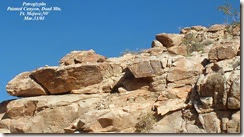
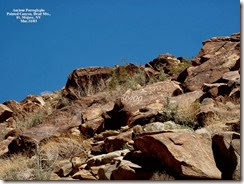

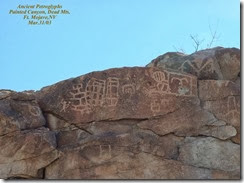
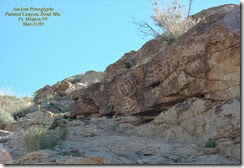
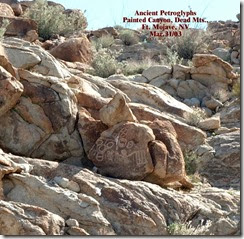
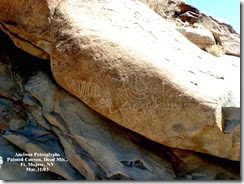
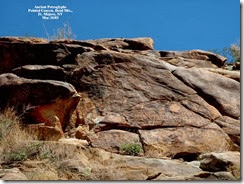
![Sidewinder Rd1[1] Sidewinder Rd1[1]](https://blogger.googleusercontent.com/img/b/R29vZ2xl/AVvXsEgJeuUnZHLpnQpXL0oL5SURrCXLh4AgiaIGsMIvTaIVugCPtpvt7BzGR0v4gdzM-KG9qpaHs5U20SA32DjDcBPHqM2fWUZanBAr8JEY2DncXPEnkvaPg4yWxcXFf8y_tGzLkYT34Zp2cCc/?imgmax=800)
![HiJolly5[1] HiJolly5[1]](http://lh3.ggpht.com/-1D_Dyia3Q6M/UpE9f9WmgaI/AAAAAAAAGLQ/Let0ETe1-UY/HiJolly5%25255B1%25255D%25255B2%25255D.jpg?imgmax=800)
![CeliaGarden1[1] CeliaGarden1[1]](http://lh4.ggpht.com/-QOCeiYQSTn0/UpE9hKjikXI/AAAAAAAAGLg/DIk-CGZwzJw/CeliaGarden1%25255B1%25255D%25255B2%25255D.jpg?imgmax=800)
![CeliaGarden5[1] CeliaGarden5[1]](http://lh6.ggpht.com/-EtZo8g2LOxI/UpE9iq6G6TI/AAAAAAAAGLw/B2Nq4tq009I/CeliaGarden5%25255B1%25255D%25255B2%25255D.jpg?imgmax=800)
![CeliaGarden8[1] CeliaGarden8[1]](http://lh4.ggpht.com/-MEke9We90W4/UpE9kGwKQhI/AAAAAAAAGMA/7sQmm0hsEkY/CeliaGarden8%25255B1%25255D%25255B2%25255D.jpg?imgmax=800)
![CeliaGarden7[1] CeliaGarden7[1]](http://lh6.ggpht.com/--p7HMI_6a6A/UpE9lfajSMI/AAAAAAAAGMQ/uh4PItjjreU/CeliaGarden7%25255B1%25255D%25255B2%25255D.jpg?imgmax=800)